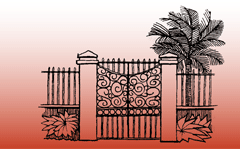Frequently Asked Questions
- Who is this FAQ section for?
Anybody whose poster, presentation, panel, etc. was accepted for the Charleston Conference is eligible to publish their work in the official Charleston Conference Proceedings. To clarify, while we do accept proceedings publications from our poster presenters, we cannot include just a PDF of the poster; a formal write-up must be submitted for inclusion.
- How will my work be presented if I upload my contribution?
The lightly copyedited and formatted contributions will appear in Open Access format online at http://docs.lib.purdue.edu/charleston/ with Digital Object Identifiers (DOIs) applied for ease of citation.
They will also appear in an indexed print volume, distributed by Purdue University Press on behalf of Against the Grain Press (see http://www.thepress.purdue.edu/series/charleston for volumes available). Both the online version and print volume will be made available by the middle of October following each Conference.
- When are submissions due?
Instructions are contained in the letter sent to speakers. You will be asked to create an account on Purdue e-Pubs. This allows you to log in and upload a final version by the end of the first week of December following the conference. It also allows you to control the usage reports you receive.
- How should I format the text of my submission?
Please upload a Microsoft Word file with the following elements:
- Title (uppercase and lowercase letters centered in the upper half of the page).
- Each author’s name in preferred order with first name, middle initial, and last name.
- The e-mail address of each author.
- The institutional affiliation of each author.
- An Abstract (no more than 250 words).
- Your text (between 2,000 and 3,000 words).
- References (if required).
For references, use the APA 6th Edition citation style, with Author (Date) in-text citations where necessary. A free guide to APA style can be found at: http://owl.english.purdue.edu/owl/resource/560/01/.
If you have more than one level of subhead, alert the editor to this by using different styles for the different levels. Boldface the top-level heading. Italicize the second-level heading. Underline the third-level heading.
- What if I want to use graphics?
A few graphics are fine, although you need to be sure they are of sufficient quality for print reproduction and that you have permission to use them. If you prefer to embed your graphics in the Word document, that is understandable if not ideal. Just be sure to include a caption, capitalized using sentence style, and prefixed with “Figure 1:” or “Table 1:” as appropriate. The caption should appear under the relevant figure.
Better quality can be achieved in the printed version if you upload each image as an additional file (the system gives you this option). We prefer this. If you choose this method, insert a curly bracketed callout into the text of your contribution to indicate preferred placement. For example: {ED: Place figure 1 here. Caption: “Figure 1: All calculated metrics used in the NCSU Libraries serial reviews process.”}.
Then name your image files correspondingly, with lead author name as prefix. For example, “Ward_Figure2.jpg” for the second image in Suzanne Ward’s contribution. Digital images should be at least 4” x 6” in size, with 300 dpi minimum for photos and 800 dpi minimum for line art. We can handle most file formats.
- What if I want to be really helpful to the copyeditor?
Do not justify your text or add optional hyphens. Do not type anything in all caps. Do not tag text for indexing. Do not use the space bar to indent paragraphs. Do use only one space between sentences. Do include page numbers in your document. If you want to use notes, use endnotes rather than footnotes. Leave endnotes the way your word-processing program automatically created them.
- Why do I have to agree to a Publication Agreement when uploading my contribution?
We need to know we have authors’ permission to publish their work. The Publication Agreement gives Against the Grain Press a license to publish your work and also warrants that it is original and does not infringe others’ copyrights. It is not a copyright transfer and does not restrict posting in your own repository or other reuse by the author. As the agreement says, “Copyright of the Work remains in Author's name and the Author reserves all other rights.”
- Do I get a free copy of the printed copy of the Proceedings as an author?
Sadly not, but remember you can download the formatted PDF of your contribution and use it in any way you want.
- My contribution has been published. Why am I getting e-mails from “Purdue e-Pubs notification system” with the subject line “Your Latest Readership Report from Purdue e-Pubs”?
Purdue e-Pubs is the online publishing platform used by Purdue Libraries and Press for Open Access materials. It is powered by Berkeley Electronic Press’s Digital Commons software. One nice feature of that system is that it sends regular download counts to authors whose e-mail addresses are registered in the system. Instructions for unsubscribing can be found in the notification e-mails.
- What if I have questions not answered in this FAQ?
You can include these in the “Additional Information for Editors” box when uploading your contribution or you can e-mail Lars Meyer, Senior Director, Content, at the Robert W. Woodruff Library at Emory University, at . Katherine Purple () at Purdue University Press will also be happy to respond to any queries.
